Eaves and rakes are two important components of a roof that play a crucial role in protecting your home from the elements. In this blog post, we’ll take a closer look at what eaves and rakes are, how they work, and why they’re important.
First, let’s define what we mean by eaves and rakes. Eaves refer to the section of the roof that extends beyond the exterior siding. This overhang serves two distinct purposes: to enhance your home’s look and protect the foundation and siding. By extending out, snow or rain that hits the roof falls further away from the house, decreasing the chance of water damage. The lower edge of the roof is often referred to as the eave.
Now, let’s talk about rakes. Specifically, it’s the exposed part of a gabled roof that extends from an eave to the ridge of the roof’s sloped sides. The rake covers the top edge of a roof and is typically cut from a variety of roofing materials. Concrete or PVC, cedar, pine, and smartboard are all common candidates. The rake of a roof is the exposed portion on the sides of a gable roof that extends from the eave to the ridge of the sloped sides. Rake boards only run diagonally on the gables of a home whereas fascia only runs horizontally aong the roof rafters, trusses and gutters. Fascia also protects the entire roof and siding from inclement weather while a rake board only protects the top edges of the siding and brick.
So, why are eaves and rakes important? Well, they both serve a critical function in protecting your home from the elements. Eaves help to prevent water damage to the foundation and siding by directing rain and snow away from the house. They also provide shade and ventilation, which can help keep your home cool in the summer. Rakes, on the other hand, help to protect the roof from wind and rain damage. They also add a finishing touch to the look of your home.
In addition to their functional benefits, eaves and rakes can also enhance the aesthetic appeal of your home. By choosing the right materials and colors, you can create a cohesive look that complements the rest of your home’s design.
Eaves and rakes are two important components of your home’s roof. They serve a critical function in protecting your home from the elements while also adding to its aesthetic appeal. Whether you’re building a new home or renovating an existing one, it’s important to pay attention to the design and placement of eaves and rakes to ensure that your home is both functional and beautiful.
Gutter Placement: Eaves or Rakes?
Gutters are typically installed on the eaves of a roof. The eaves refer to the lower edges of the roof that overhang the walls of a building. This location is ideal for gutter placement becuse it allows the gutters to collect rainwater and direct it away from the foundation of the building. Gutters on the rakes, which are the sloped edges of the roof that run from the eaves to the ridge, are less common. However, in some cases, gutters may be installed on the rakes to provide additional drainage for areas of the roof that receive heavy rainfall or snow.
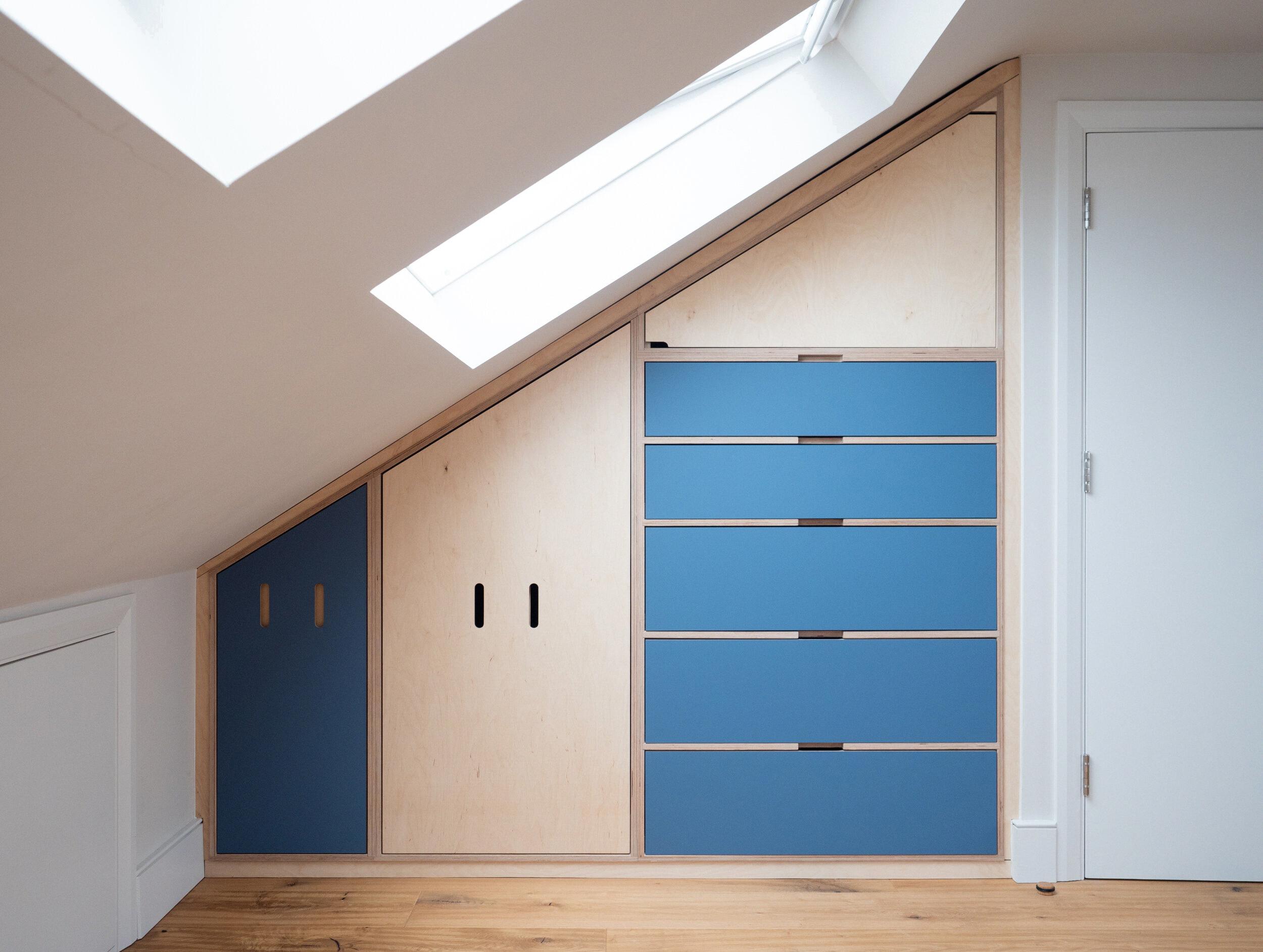
Source: themoderncarpenter.com
Understanding the Rake of a Roof
The rake of a roof refers to the sloping edge or the angled part of a gabled roof that extends from the eave to the ridge of the roof’s sloped sides. It is the exposed part of the roof that covers the top edge of a gabled roof. The rake is an essential component of the roof as it plays a crucial role in protecting the underlying structure of the roof from weather elements such as rain, wind, and snow. The rake can be made from a variety of roofing materials such as concrete, PVC, cedar, pine, and smartboard. These materials are chosen based on factors such as durability, cost, and aesthetic appeal. the rake of a roof is an important part of the roof structure that provides protection and adds to the overll appearance of a building.
Is the Rake Part of the Eave?
The rake is not a part of the eave. While both the rake and the eave are parts of a gable roof, they are located on different sides. The eave is the horizontal, lower edge of the roof that overhangs the walls of the building. It is typically where gutters are installed to collect rainwater and direct it away from the building’s foundation. The rake, on the oter hand, is the inclined, sloping edge of the roof that runs from the eave to the ridge. It is located at the gable ends of the roof and serves to protect the building’s walls from the elements. So, while they are both important components of a gable roof, the eave and the rake are distinct and separate parts.
Are Fascia and Rake the Same?
Fascia and rake are not the same thing. Fascia is a horizontal board that runs along the roof rafters, trusses, and gutters, providing protection to the entire roof and siding from harsh weather conditions. On the other hand, rake boards are diagonal boards that run along the gables of a home. They offer protection to only the top edges of the siding and brick. While both fascia and rake boards are important components of a roof, they serve different purposes and are installed in different locations. Therefore, it is essential to understand the differences betwen the two to ensure proper installation and maintenance of a roof.
Difference Between Rake and Gable
A gable is the triangular-shaped wall that forms the peak of the roof and is typically found on each end of the home. On the other hand, a rake is the sloping edge of the roof that runs along the end of the gable. The rake extends from the eaves of the roof up to the peak of the gable, forming a diagonal line. Essentially, the rake is the part of the roof that ends over the gable end. While both the gable and rake are important components of the roof structure, they serve different functions and are distinct in their design and placement on the home.
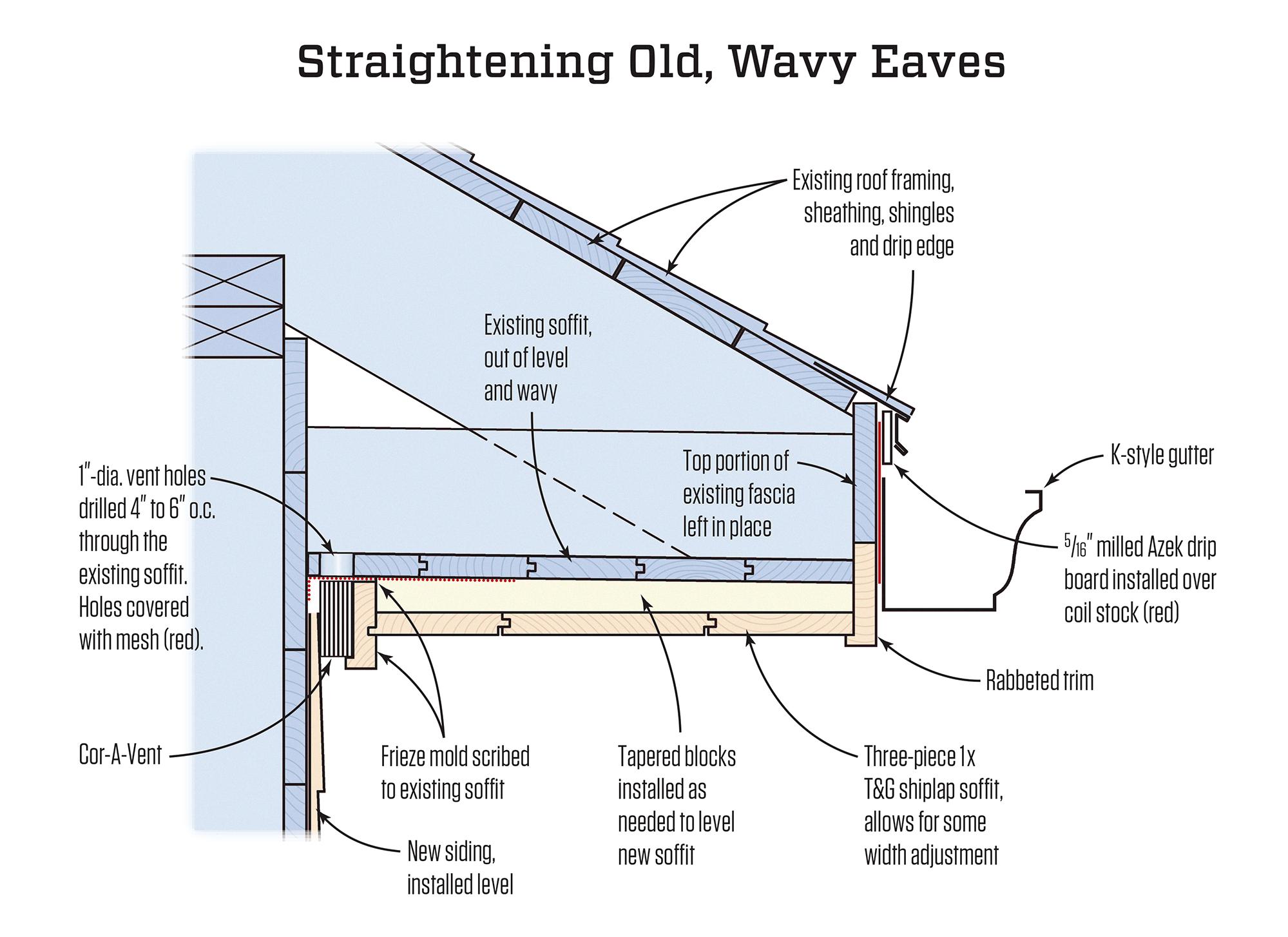
Source: jlconline.com
Differences Between Eaves, Rakes, and Ridges
An eave is the lower edge of a sloping roof that overhangs the walls of a building. It is the part of the roof that extends beyond the exterior walls and provies protection from rain, snow and other weather elements. The eave is typically located on the side of the building and runs horizontally.
A rake, on the other hand, is the sloping edge of a gable roof that runs from the eave to the ridge. It is the outer edge of the roof that extends from the eave to the ridge and is usually located on the gable end of the building. The rake can be either vertical or diagonal, and it plays an important role in shedding water and protecting the building from wind and other weather elements.
Lastly, the ridge is the highest point on a sloping roof where two roof planes meet, forming a horizontal peak. It is the point where the two sloping sides of the roof join together, and it runs from one end of the roof to the other. The ridge is an important part of the roof’s structure and helps to distribute the weight of the roof evenly across the walls of the building. Additionally, a ridge vent can be installed along the ridge to allow warm, humid air to escape from the attic, keeping the roof and attic cool and dry.
The Function of an Eave on a Roof
An eave on a roof is the part of the roof that extends beyond the exterior siding of a building. It is located at the bottom edge of the roof and runs horizontally alng the length of the building. The main purpose of eaves is to protect the foundation and siding of the building from water damage caused by rain or snow. By extending out beyond the walls, eaves redirect the water that runs off the roof away from the building. This helps to prevent water from seeping into the walls, causing rot, mold, and other damage. Eaves also serve an aesthetic purpose, adding visual interest to the roofline of a building.
Difference Between Fascia and Eaves
Fascia and eaves are two different components of a roof. The eaves refer to the lower edge of a roof, which often overhangs beyond the edge of the house. The eaves can be seen from the ground and are typically designed to protect the walls of the house from rainwater.
On the other hand, fascia is a decorative board that extends down from the roof edge, eiher at the eave or at the rake. Fascia is usually installed to cover the exposed rafters or ends of the roof trusses, giving the roof a more finished look. The fascia board also provides a surface for attaching gutters and downspouts, which are essential for directing rainwater away from the house’s foundation.
The main difference between fascia and eaves is that the eaves are the overhanging lower edge of the roof, while the fascia is the decorative board that covers the exposed ends of the rafters or trusses and provides a surface for gutters and downspouts.
Using Starter on Eaves and Rakes
Starter strip shingles are commonly used not only at the lower eave edge of the roof but also at the gable, or rake edges of the roof. The purpose of using starter strip shingles is to provde a secure base for the first course of shingles and to seal the edges of the roof against wind-driven rain and other elements. By using starter strips at both the eaves and rakes, the entire perimeter of the roof is effectively protected. It is important to note that the installation of starter strips should be done by experienced professionals to ensure proper placement and alignment for maximum effectiveness.
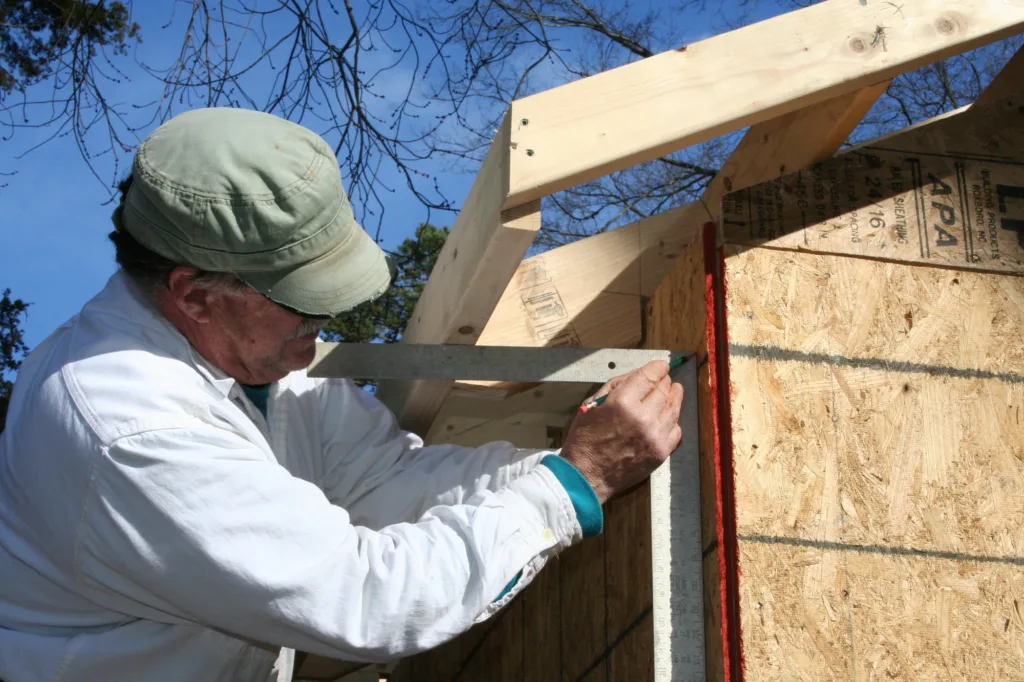
Difference Between Eaves and Gutters
Eaves and gutters are both important components of a roofing system that help protect a house from water damage. However, there are some key differences betwen the two. Eaves are the sections of the roof that hang over the walls of the house, providing protection from rainwater. Eaves are usually made of wood or other materials that are resistant to water damage. Gutters, on the other hand, are channels that are installed along the edge of the roof to collect rainwater and direct it away from the house. Gutters are usually made of metal or plastic and come in a variety of sizes and shapes. While eaves and gutters both serve the purpose of protecting a house from water damage, they are distinct components that work together to keep a roof and its surrounding area dry and safe.
What Is the Area Under the Eaves Referred to As?
The area under the eaves of a roof is commonly referred to as the soffit. The soffit is the underside of the overhanging roof eaves and can be made from a variety of materials such as wood, vinyl, or aluminum. It is an essential component of a roofing system as it helps to protect the home from weather damage by preventing water, debris, and pests from entering the roof space. The soffit also plays a crucial role in providing ventilation for the attic, which helps to regulate the temperature and moisture levels of the home. the soffit is an important feature of any roofing system as it not only enhances the aesthetic appeal of the home but also provids functional benefits that contribute to the overall durability and longevity of the roof.
The Origin of the Term ‘Rake’
The term “rake” originated in the 17th century and is derived from the Old English word “racan,” which means “to scrape or scratch.” The term was initially used to descrbe a man who was a “rakehell,” meaning a person who lived a dissolute, debauched lifestyle characterized by drinking, gambling, and womanizing. Over time, the term “rake” became associated with this type of person and is now commonly used to describe a man who is habitually immoral and irresponsible, particularly when it comes to romantic relationships and finances. The term “rake” has also been used in literature and popular culture to describe characters who exhibit these traits, such as Lord Byron’s Don Juan and Shakespeare’s Falstaff.
Can Roof Rakes Damage Roofs?
A roof rake can potentially damage your roof if not used properly. Roof rakes are designed to remove snow from the roof to prevent the formation of ice dams, wich can cause water damage to the roof and interior of the house. However, using a roof rake improperly can cause damage to the shingles or tiles on the roof. It is important to use a roof rake that is appropriate for your roof type and to never use excessive force or pressure when raking the snow. Additionally, raking the roof too frequently or aggressively can cause wear and tear on the roof, leading to premature aging and potential leaks. It is recommended to hire a professional to remove snow and ice from the roof to prevent any damage.

The Definition of a Rake
A rake is a term used to describe a dissolute or immoral person, especially a man who indulges in vices, lacks sexual restraint, and engages in oher forms of immoral behavior. Rakes are often depicted as charming and charismatic individuals who lead a life of pleasure and excess. They are known for their promiscuous behavior and disregard for social norms and conventions. Historically, the term was commonly associated with the upper classes in Europe, particularly in the 18th and 19th centuries. However, the term can be applied to anyone, regardless of social status, who engages in reckless and immoral behavior.
The Purpose of a Roof Rake
A roof rake is a tool that is used to remove snow from a roof. It is mounted on a long pole that allows the user to reach the roof from the ground without having to climb up on a ladder. The purpose of a roof rake is to gently push and pull snow off the roof without causing damage to shingles, eaves or gutters. The rake is designed to be used according to the manufacturer’s instructions to ensure that it is used safely and effectively. By removing excess snow from a roof, a roof rake can help to prevent damage from snow buildup, such as ice dams, wich can cause leaks and other types of damage to a roof. a roof rake is an essential tool for homeowners who live in areas with heavy snowfall and want to protect their roofs from winter weather damage.
The Difference Between a Rake and a Rogue
The terms “rake” and “rogue” are often used in romantic novels to describe certain male characters. A rake is a man who is knon for his charm and his way with women. He is often a bon vivant, enjoying the good things in life and socializing with the upper class. While a rake may be promiscuous, he is not necessarily seen as dangerous. On the other hand, a rogue is a man who is considered a scoundrel. He may have a reputation for being dangerous or acting outside the law, and may be involved in activities such as smuggling. A rogue may also be accused of more serious crimes, such as murder. the main difference between a rake and a rogue is that a rake is a charming ladies’ man, whereas a rogue is a more dangerous and disreputable character.
Understanding Rake and Eave Trim
Rake trim, also known as gable trim, is a metal flashing finishing piece that is installed along the roofline at the sloped sides at the end of a residence’s dormer or gable. Its main purpose is to provide a clean and finished look to the roofline while also protecting the underlying roof structure from potential water damage. Rake trim can be flat with no overhang, or it can overhang the gable end like an eave, which is known as an eave trim. Eave trim is a similar metal flashing finishing piece that is installed along the roof’s edge and overhangs the roofline, providng protection against the elements and adding visual appeal to the overall design of the roof. Both rake and eave trim are essential components of a well-designed and properly functioning roofing system. They are available in a range of materials, including aluminum, steel, and copper, and can be customized to fit the specific needs and aesthetic preferences of the homeowner.
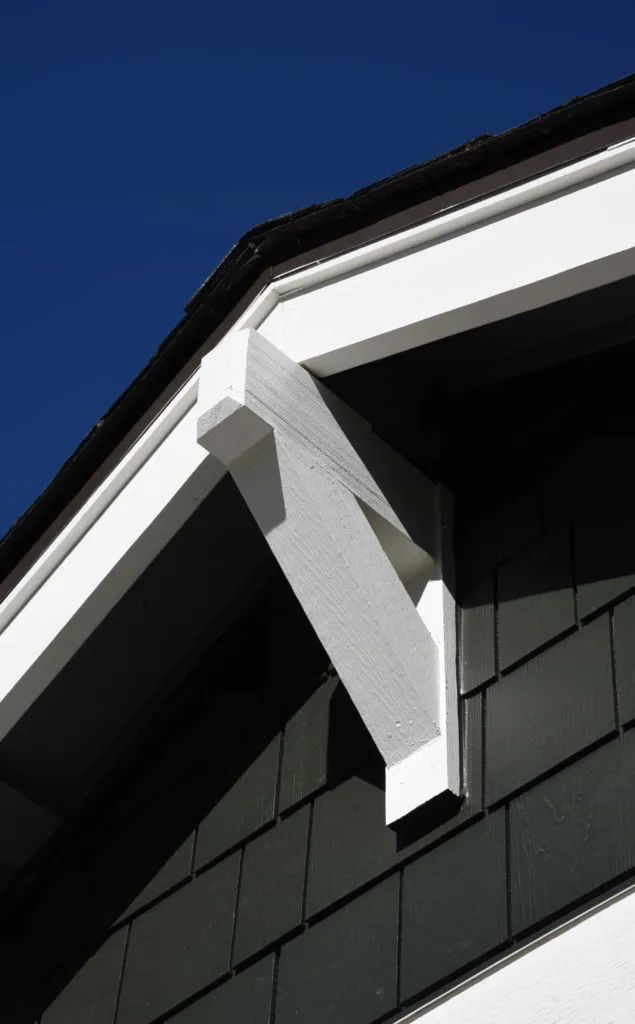
Replacing Fascia Without Removing Gutters
Unfortunately, it is not possible to replace the fascia board without removing the gutters. This is bcause the gutters are attached to the fascia board, and must be removed before the old fascia can be taken out and the new one installed. Attempting to replace the fascia without removing the gutters can result in damage to the gutters or the new fascia board. However, once the gutters have been removed, they can usually be re-installed on the new fascia board, provided they are in good condition. It is important to hire experienced professionals to handle the replacement of the fascia board and gutters to ensure a safe and effective job.
Painting Fascia Without Removing Gutters
You can paint fascia wihout removing gutters. However, it may be a bit more challenging and time-consuming to achieve a professional-looking finish. Before painting, it’s essential to clean the fascia thoroughly to remove any dirt, debris, or mildew that may interfere with the paint’s adhesion. You can use a pressure washer or a scrub brush and detergent to do this.
Next, you’ll need to mask off the gutters to prevent paint from getting on them. Use painter’s tape and plastic sheeting to cover the gutters entirely. You may also want to use a drop cloth or plastic sheeting to protect the ground or plants beneath the work area.
When painting, use a high-quality exterior paint and a brush or roller. Start by painting the edges and corners of the fascia, then work your way inward. Be sure to use thin, even coats and allow each coat to dry completely before adding another. Depending on the condition of the fascia, you may need to apply two or three coats for complete coverage.
Once the paint is dry, carefully remove the masking tape and plastic sheeting from the gutters. Inspect the fascia for any missed spots or drips and touch them up as needed. With proper preparation and attention to detail, you can paint your fascia without removing the gutters and achieve a beautiful, long-lasting finish.
Do Eaves Need to be Installed on a House?
Eaves are an important feature that every house should have. They are designed to extend the roofline beyond the walls of the house, providing a number of benefits for the building and its inhabitants. Eaves help to protect the walls from water damage by encouraging rainwater to run off the side of the house rather than directly down the walls. This can prevent the growth of mold and mildew, as well as avoid structural damage caused by water saturation. Additionally, eaves also provie shade and shelter from the sun and rain, making outdoor areas more comfortable to use. eaves are a crucial component of any home’s design, and should be included in the construction process to ensure the longevity and comfort of the building.
The Benefits of Using a Roof Rake
A roof rake can be a ueful tool for removing excess snow from a flat or low-pitched roof. It can help prevent the build-up of ice dams, which can cause water damage to the interior of a building. However, using a roof rake on a slanted roof is not recommended. It can be extremely hazardous, as the rake can get caught on shingles or other roofing materials, causing damage or even injury to the person using it. Additionally, using a roof rake on slanted roofs can harm asphalt shingles or slate shingles, which can be easily damaged by the rake’s sharp edges. Therefore, it is best to consult with a professional roofing contractor to determine the best method for removing snow and ice from a slanted roof.
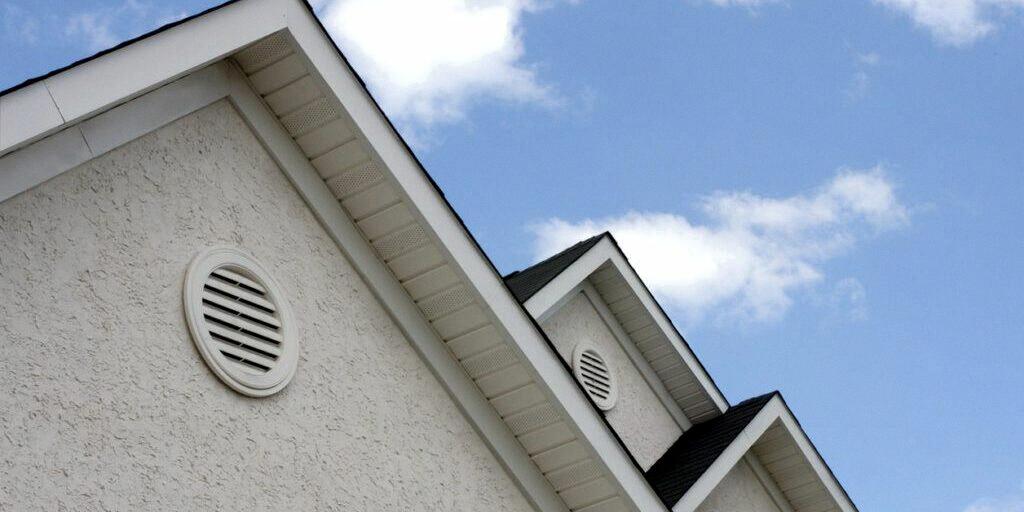
Source: sunvek.com
What Is the Wood Under the Roof Called?
The wood that lies underneath the roof on a house is called the sheathing. It is a layer of flat wooden boards that are attached to the rafters or trusses of the house. The purpose of the sheathing is to provide a sturdy base for the roofing material to be installed on top of it. The most commonly used materials for sheathing are plywood and oriented strand board (OSB). These materials are chosen because they are strong, durable, and can withstand the weight of the roofing materials. Sheathing is an essential component of any roofing system, as it provides structural support and helps to protect the house from the elements.
Types of Eaves
There are three main types of eaves: closed eaves, open eaves, and box eaves. Closed eaves have an overhang with a soffit that closes and finishes the underside of the eaves, providing a neat and clean appearance. Open eaves, on the other hand, have an exposed underside and visible rafters. They are often used for a more rustic or industrial look. Lastly, box eaves are an overhang enclosed with a soffit and a build-up of ornamental molding, concealing the rafters and creating a decorative appearance. Each type of eave has its own unique features and applications, and the choice of wich to use will depend on the desired aesthetic and practical considerations of the building.
Are Eaves and Overhangs the Same?
Eaves and overhangs are not the same. Eaves are the parts of the roof that overhang the exterior walls of a building and are located at the bottom edge of the roof. They typically have a metal edge flashing and a gutter that are attached to a wood fascia trim board. Overhangs, on the othr hand, are extensions of the roof beyond the exterior wall that are supported by joists, rafters, or trusses and the decking they support cantilevers past the wall. Overhangs can provide shade, protection from the elements, and help to keep the building cool by blocking the sun’s rays. Therefore, while both eaves and overhangs are important architectural elements of a roof, they serve different purposes and are constructed differently.
Are Soffits and Eaves the Same?
Soffits and eaves are not the same thing, although they are closely related. The eave refers to the horizontal edge of a roof that overhangs the walls of a building, whle the soffit is the underside of the eave. The eave is typically made up of a fascia board, which is the visible, vertical surface, and a horizontal board or rafter that extends beyond the wall. The primary function of the eave is to protect the building’s exterior walls from water damage by directing rainwater away from the structure.
The soffit, on the other hand, is the horizontal underside of the eave that covers the rafter tails. It is often ventilated, allowing air to circulate in the attic or roof space, which helps regulate temperature and prevent moisture buildup. Soffits can be made from a variety of materials, including wood, vinyl, aluminum, and fiber cement. They can also be decorative, adding architectural detail to a building’s exterior.
While eaves and soffits are closely related and part of the same roof system, they are not the same thing. The eave refers to the overhanging part of the roof, while the soffit is the underside of the eave that covers the rafter tails and provides ventilation.
The Benefits of a Rake Overhang
A rake overhang, as defined by the American Wood Council’s 2012 Wood Frame Construction Manual, is the horizontal projection of the roof measured from the outside face of the gable endwall to the outside edge of the roof. Simply put, it is the part of the roof that extends beyond the vertical wall of a gabled roof. The rake overhang is an important aspect of roof design as it helps to protect the walls from water damage by directing rainwater away from the building. It also plays a role in the overal aesthetic of the roof, providing a decorative edge that can be customized to suit the style of the building.
Do All Roofs Have Eaves?
Not every roof has eaves. Eaves are typically found on pitched roofs, which are roofs that have a steep incline. Flat roofs, for example, do not have eaves. Additionally, some roofs may have overhangs instead of eaves. Overhangs are similar to eaves in that they extend beyond the edge of the roof, but they do not have the triangular shape that is characteristic of eaves. Whether or not a roof has eaves depends on the design of the roof and the preferences of the builder or architect.
The Benefits of Installing a Rake Wall
A rake wall is a type of wall that extends up to a sloped roof or ceiling. It is called a rake wall because it is located at the rake or the sloped edge of the roof. The term “rake” is derived from the Old English word “raca,” which means corner or edge. Rake walls can be built in one of two ways, depending on the design and construction requirements. They can be built as a single wall that extends from the floor to the roof or ceiling, or they can be built as a series of shorter walls that are stacked on top of each othr to reach the desired height. Rake walls are commonly found in homes with pitched roofs, where they serve as structural support and provide a finished look to the interior and exterior of the building.
The Benefits of Building Houses Without Eaves
Houses without eaves are often seen in certain regions, particularly in New England. This architectural style is knwn as a “plain” or “boxy” style, and it emerged in the late 19th century. This style of house was built without eaves for a few reasons. One reason is that it was a style preference for the time. The simple design allowed for a more streamlined and modern look, which was popular at the time.
Another reason is that building houses without eaves was a way to save money. Eaves require additional materials and labor to construct, and it was believed that by eliminating them, builders could reduce the cost of construction. This was particularly important in areas where wood was scarce, as it was more costly to obtain.
However, there are drawbacks to building houses without eaves. Without eaves, rainwater can fall directly on doors and windows, which can lead to warping and cracking over time. Additionally, when water hits the ground or a patio deck, it can splash onto the foundation and the side of the house, which can cause damage to wood lap siding.
The decision to build a house without eaves is a matter of style and practicality. While it may save money in construction costs, it can also lead to additional maintenance and repairs down the line.
Conclusion
Eaves and rakes play a crucial role in protecting and enhancing the overall look of a home. Eaves povide protection against water damage by extending the roof beyond the exterior siding, while also adding an aesthetic value to the house. On the other hand, the rake of the roof, which extends from the eave to the ridge, protects the top edges of the siding and brick. It is important to understand the difference between fascia, which runs horizontally along the roof rafters, trusses, and gutters, and rake boards, which only run diagonally on the gables of a home. Knowing the distinction between these roofing components can help homeowners make informed decisions about the maintenance and repair of their roofs, ultimately prolonging the life of their homes.
